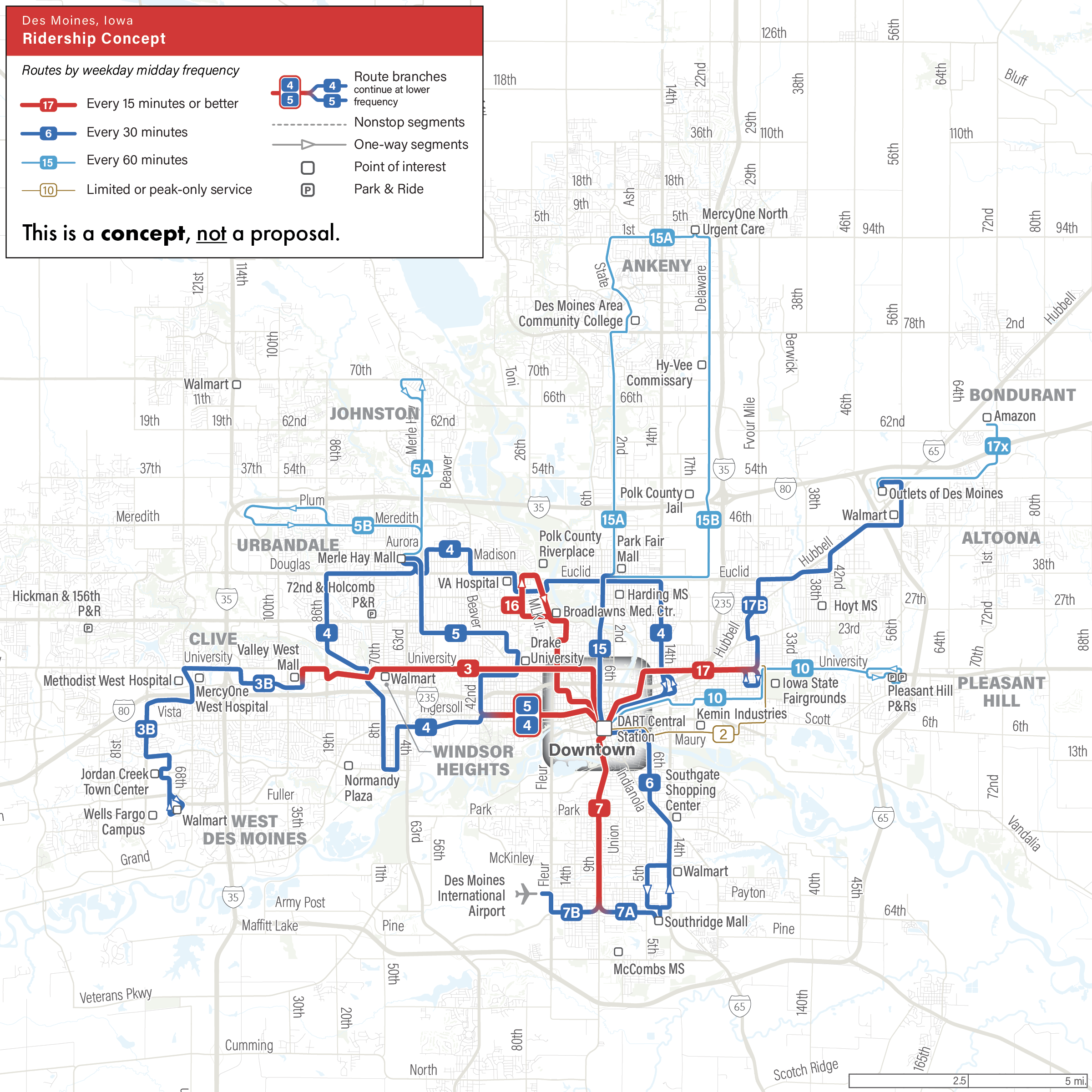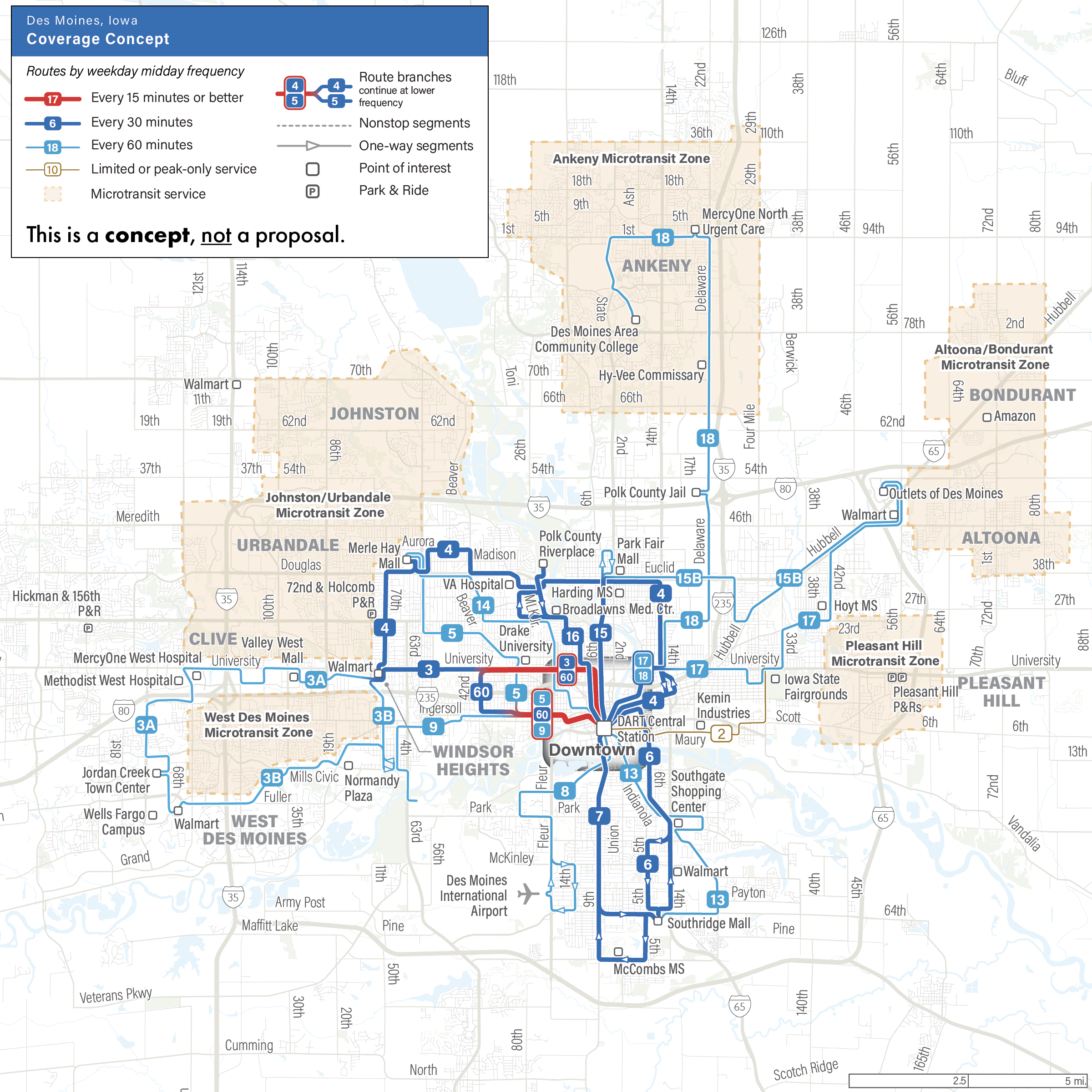Concepts
How should we design our new network?
It depends on our goal. If our goal is to get lots of people to ride the bus (high ridership), we would run frequent service where there are lots of people and jobs close together. If our goal is to reach as many places as possible (high coverage), we would spread out our bus service.
Ridership Concept
The Ridership Concept focuses on providing frequent service where most people and jobs are. Buses in these places would arrive every 15 minutes during most of the day, seven days a week. So many people would have to wait less time for a bus.
However, by providing so much bus service in these places, there would be fewer total bus routes, even with the same amount of money that DART has to deliver service today. Some riders would have longer walks to their bus routes, while others may not have bus service at all.
Where service remains, most buses would come more often than today, so more people would be able to get to more jobs and other locations faster. More people would find the service useful, so more people would ride the bus.
Click on the map to view it in your web browser.
Click here to view route schedules for the Ridership Concept.
Coverage Concept
The Coverage Concept focuses on providing some service to as many people and places as possible. All places that have service today would still be near some service, and some areas would get new, though minimal, service.
Spreading the service out to so many areas means that most routes can’t offer service that comes often (every 15 minutes). There would be more total routes, but most buses would only come every 30 or 60 minutes. So most people would still have to wait a long time for a bus.
This concept has microtransit zones where you would use an app or call to get a ride to another point within the zone. The response time could be up to an hour, and you may be asked to walk to a major street.
Click on the map to view it in your web browser.
Click here to view route schedules for the Coverage Concept.

